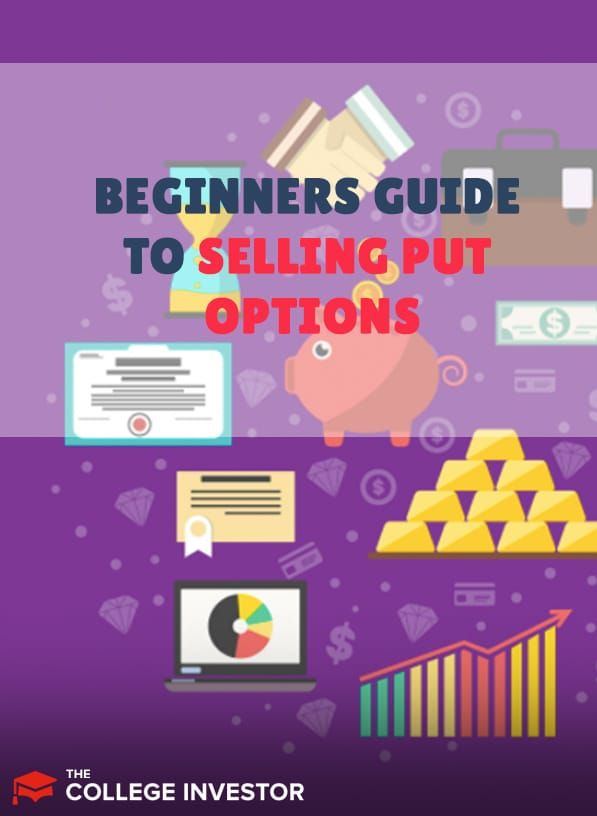
Many traders are familiar with buying options. Buy a call if you believe the market will go up and buy a put if you think the market will go down.
In general, if the market goes above your call strike or below your put price, you make a profit. A few other variables come into play in determining if the trade will be profitable or not—especially theta or time decay of the option.
Both of the above strategies take a directional view of the market. One view needs the market to go up while the other needs it to go down. For call buyers, if the market remains where it is or only goes up a little, their call will expire worthless, creating a loss unless they can buy it back, which will generate a smaller loss.
The game of buying options is one with little margin of error. But what if you could build in some margin of error so that the market doesn’t have to move so much for your option to generate a profit? Selling put options is one such strategy. In this article, we'll explore what put selling is and break down its main benefits and risks.
Selling Put Options
Selling put options is a strategy that isn’t as familiar as option buying. Some traders know about put selling but view it as extremely risky. Some even go so far as to say there is unlimited risk involved when you sell puts.
The specific kind of "dangerous" put selling that these traders are referring to is naked puts. Naked put selling is when the put is sold outright without owning the stock (i.e., covering the option). The opening transaction on a put sell is to sell rather than buy a put option. When selling to open a position, you're shorting. In this case, the trader is shorting the put.
For those who are familiar with shorting stock, there are some similarities. A trader who shorts a stock is hoping that the stock price goes down. This trader has a short bias view of the stock. The stock going down is the only way he can make money on the trade. For put sellers, it isn’t as simple as that.
Put selling takes a neutral to bullish view of a stock. That may sound contrary to shorting. If we short the option, aren’t we hoping that the stock will go down? No. We are hoping that its option premium goes down. All the way to zero means the trade has successfully and completely played out. An additional benefit of allowing the premium to fall so low is that many brokers don’t charge an option contract fee when the premium is at or below 0.10.
What Is Premium?
Every options trader deals with premium. When you buy a stock, the trade will become profitable when the stock price moves above your entry price. An option is a derivative of the stock.
Instead of profiting directly from the stock price movement, the options trade profits on moves in the option’s price, which is called premium. Because we are shorting the put, we are hoping for the option's price to decrease (i.e., we are hoping for the premium to decrease).
Let's look at an example of a put selling trade. Today is 4/19/21, and Microsoft is trading at 250. A put seller wants to sell puts on the May 07, 230 strike. The May 07, 230 put option is trading for 0.64 x 0.72. The trader puts in a limit order for 0.68 on five contracts. The order executes at that price.
Over the next few weeks, the price of MSFT goes to 260 and then down to 240. The option premium has dwindled to 0.35 x 0.40, creating an unrealized gain of ~0.30 or 5 x 0.30 x 100 = $150. If MSFT can stay above 230 by May 07, the trader will capture full premium, resulting in a profit of 0.68 x 5 x 100 = $340. Of course, the trader can buy the option back at 0.38, closing out the trade and making a little less profit.
Related: Analyzing And Trading Options 101
Does Selling Put Options Have Unlimited Risk?
Does put selling carry unlimited risk? No. The confusion in that statement comes from equating selling put options to selling stocks short.
Yes — selling stocks short has unlimited risk. However, selling a put option on MSFT at the 230 strike is committing to buy MSFT stock at a share price of $230. In the worst-case scenario, MSFT drops to $0 before the seller executes the contract. This would lead to a loss of about $23,000 (230 x 100 = $23,000) minus the premium that you received.
That's obviously still a massive loss. But the odds of MSFT dropping to $0 are incredibly low. Plus, you'd always have the option to close out your position before the stock price dropped that far to limit your losses. It's also highly likely that the seller would choose to execute the contract to lock in profits well before the stock reached $0.
In any case, the maximum that a seller can lose on a put sale will always be a defined number. On the other hand, selling naked calls does have unlimited risk.
Selling puts far out of the money (far away from the current stock price) provides for a lot of padding. It allows the stock price to move around quite a bit. But selling puts far out of the money is very difficult. The difficulty comes from finding good enough premiums to make the trade worth it.
Final Thoughts
Put selling is an income-collection strategy. The upside on the trade is capped at the entry price of the option. Unlike being long a stock, a put seller can’t participate in any upside movement of the stock. But for those who can find far out of the money options and have the patience to let the premiums dwindle, it can be a rewarding trading strategy.

Robert Farrington is America’s Millennial Money Expert® and America’s Student Loan Debt Expert™, and the founder of The College Investor, a personal finance site dedicated to helping millennials escape student loan debt to start investing and building wealth for the future. You can learn more about him on the About Page or on his personal site RobertFarrington.com.
He regularly writes about investing, student loan debt, and general personal finance topics geared toward anyone wanting to earn more, get out of debt, and start building wealth for the future.
He has been quoted in major publications, including the New York Times, Wall Street Journal, Washington Post, ABC, NBC, Today, and more. He is also a regular contributor to Forbes.
Editor: Clint Proctor Reviewed by: Chris Muller
